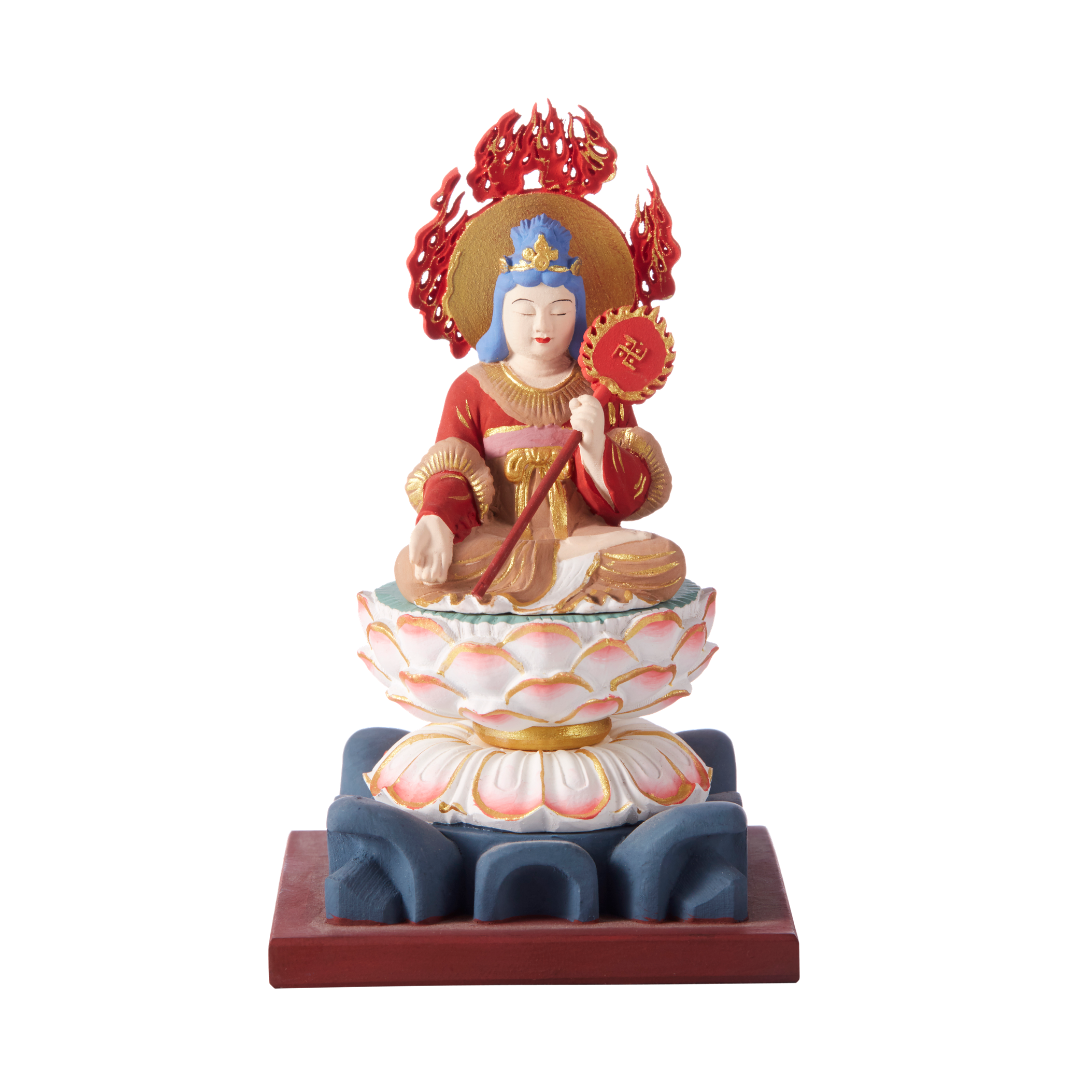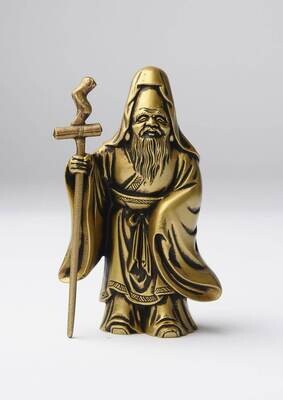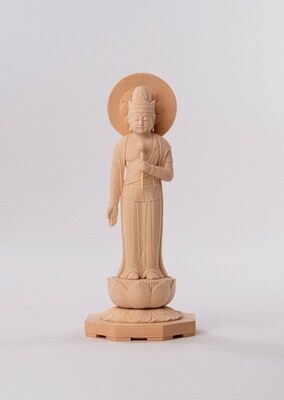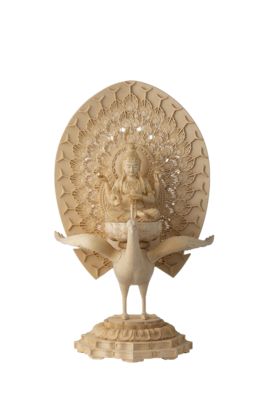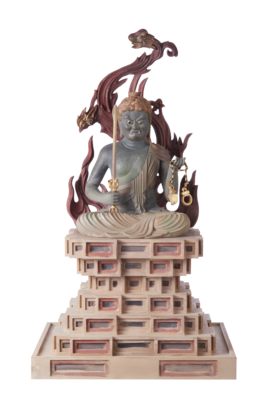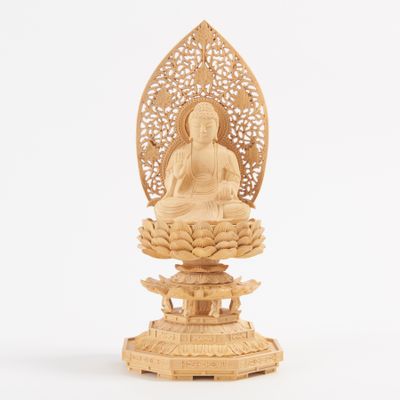Marishiten (Marici) (彩色摩利支天座像)
Originally depicted as a nihizo goddess (Buddhist deity with two arms), today Marici (The Buddhist god of war) is constructed in many forms including in the image of a male god or as a sanmen roppizo (Buddhist deity with three faces and six arms). As the symbol of heat-haze or shimmering light personified, Marici has been worshipped by samurai families since ancient times, Sengoku (warring-period) samurai Mori Motonari or Tachibana Dosetsu used the crest of Marici, while Yamamoto Kansuke and Maeda Toshiie—famous generals from the same period—were both said to be firm believers.
The Colored Marishiten Statue is one of the Buddhist sculptures and painted statues symbolically representing Marishiten, a sacred being born from the intertwining of Buddhism and Shintoism. Marishiten is worshipped as a goddess associated with warfare, courage, motherhood, and protection. This statue was crafted to visually depict her divine nature and strength.
Typically, these statues are enshrined in beautifully decorated Buddhist temples and Shinto shrines, where they are welcomed as sacred entities by both devotees and visitors alike. The Colored Marishiten Statue is often carved from wood and adorned with vibrant paint. The sculptures are meticulously detailed, showcasing features that are characteristic of Marishiten, including her multi-armed female form and iconic weapons.
One noteworthy aspect of these statues is their vivid and colorful presentation. The use of bright and striking colors serves to emphasize her divinity and majesty, leaving a lasting impression on those who worship her. The statues are often embellished with gold leaf and precious gemstones, further enhancing their beauty and sacred aura.
Devotees come before the Colored Marishiten Statue to offer prayers and offerings, seeking courage, protection, and blessings in various aspects of life. She is especially revered by warriors, martial artists, mothers, and individuals looking for protection in their households.
In summary, the Colored Marishiten Statue is a beautiful piece of religious art that visually represents the veneration and faith associated with Marishiten. Through its intricate craftsmanship and vibrant colors, it emphasizes her divinity and sacredness, providing hope and protection to worshippers. In the realm of Japanese religion and culture, Marishiten holds a significant and revered position.
- Size: H10.5×W6×D6 (cm), 75g
- Material: Tsuge (柘植)
- Made in China
- You can choose the option to consecrate this statue (give an eye-opening ceremony) before it is shipped from Japan. If you choose this option, we will bring the statue to a Japanese temple, and pay them the necessary fees so that your statue is properly consecrated. The temple will issue a certificate of proof with your name on it, which will also be shipped together with your statue
- Shipped globally from Japan by using DHL. DHL is the world-class shipping services provider who makes international delivery a fast, smooth, and hassle-free experience. Delivery time can be faster than when shopping at an e-commerce website in your country, and of course your package will be covered by insurance. You can check the shipping cost for your entire order before you make a purchase
